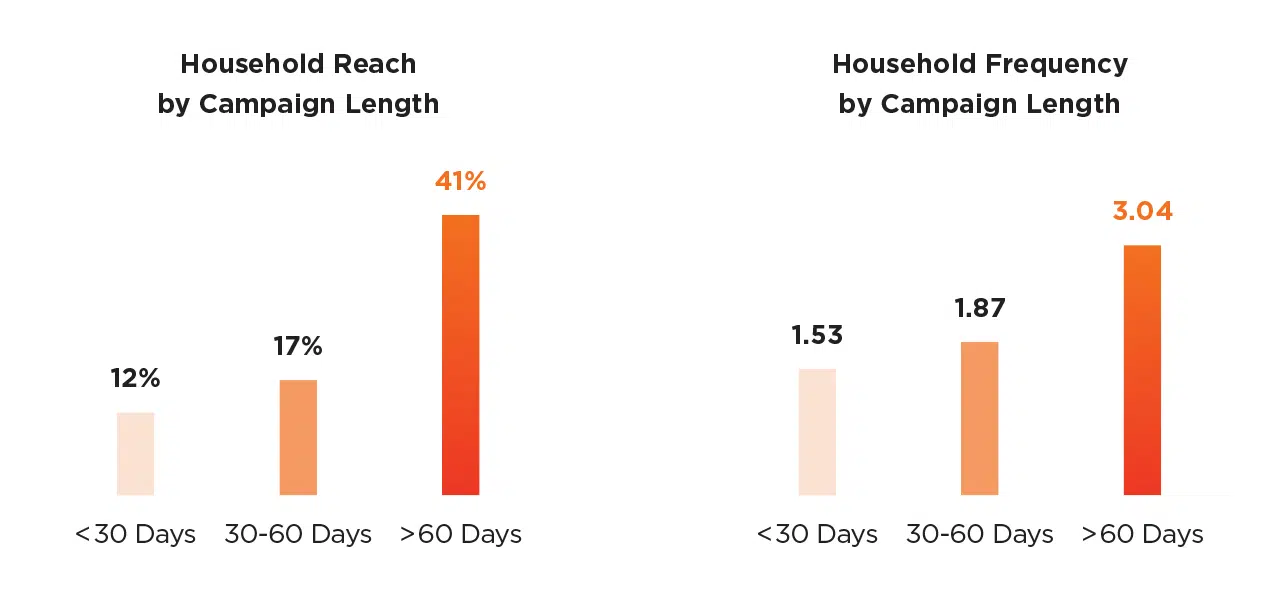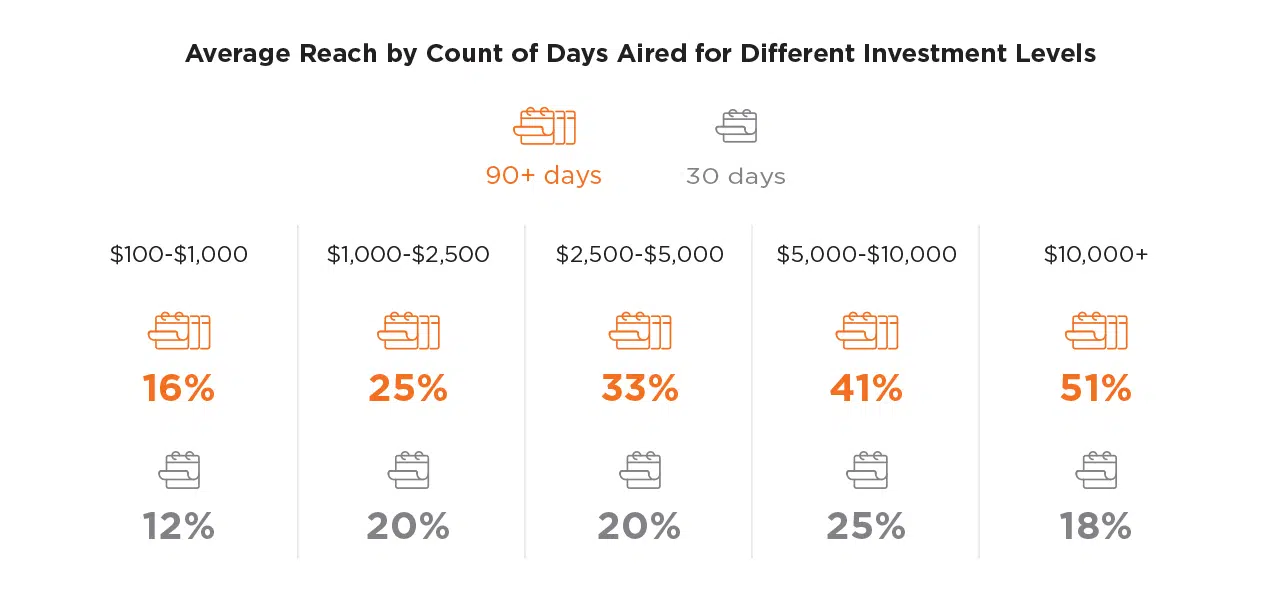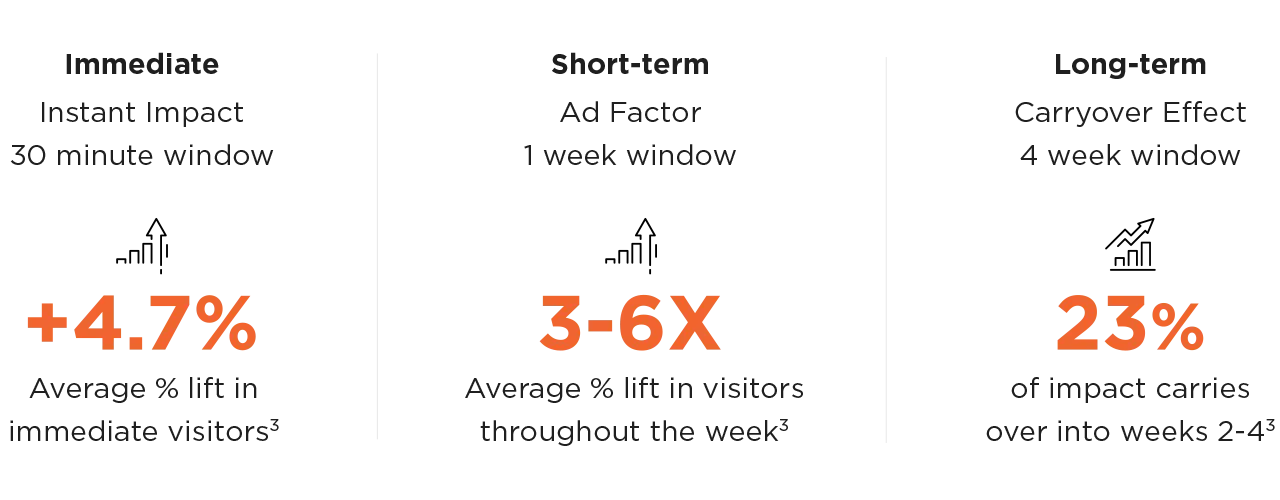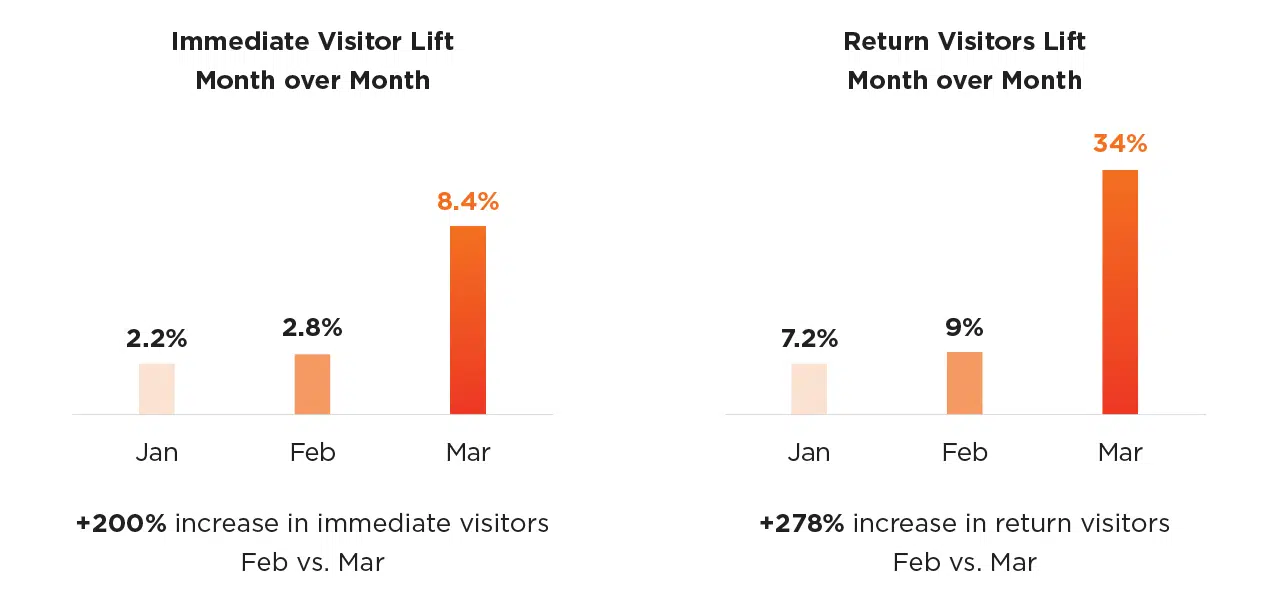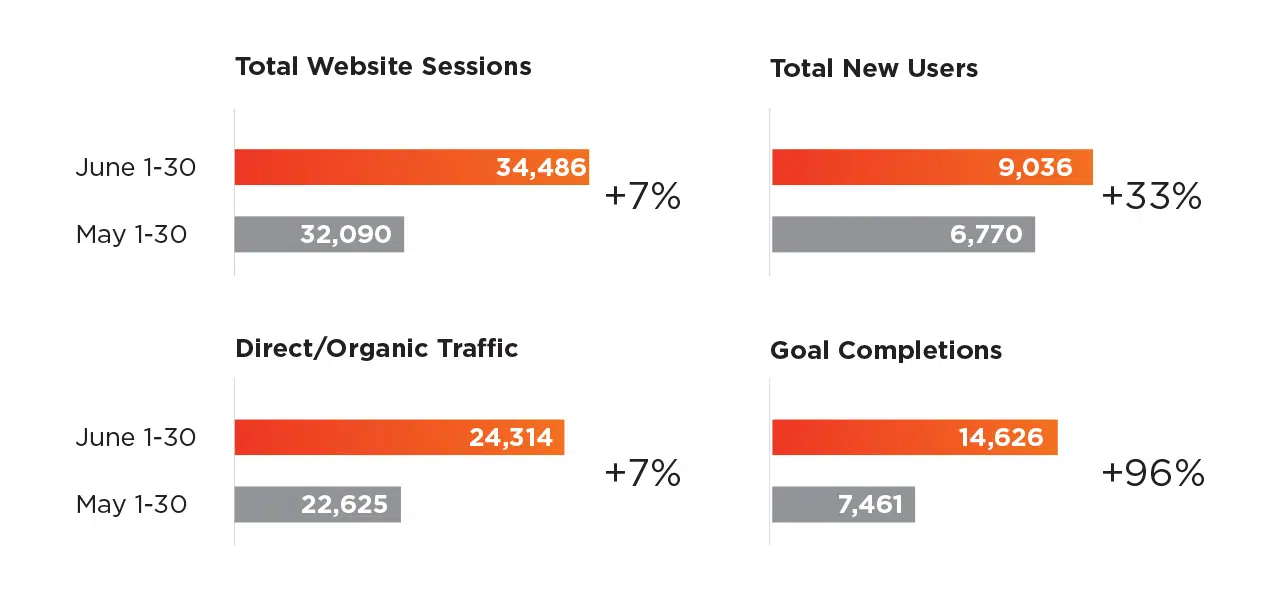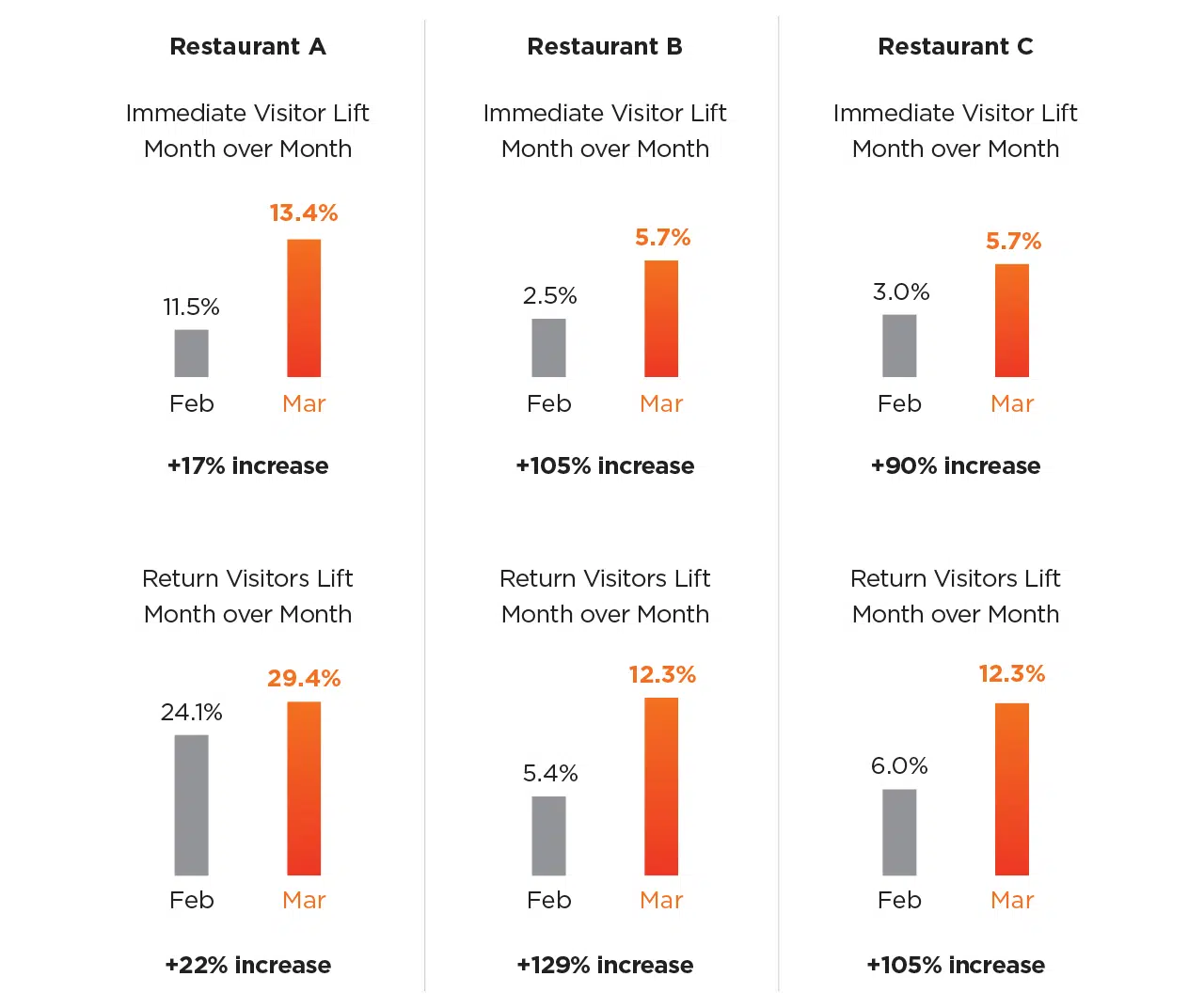You’ve probably heard “consistency is key” – and it’s true! Consistency is fundamental to achieving many business goals and ultimate success. Effectv compiled insights from thousands of Effectv advertising campaigns, 400+ Effectv campaigns, and a handful of case studies to understand the benefits of consistency in TV advertising.
Here’s what we found on the benefits of continuous TV advertising.
TV Campaigns That Air Longer Deliver More Reach and Frequency
In an analysis of 400+ Effectv TV advertising campaigns in 1Q 2022, we found campaigns that aired longer than 60 days reached 3.4X more households compared to campaigns that aired less than 30 days.1 In addition to a noticeable increase in reach, campaigns that aired longer than 60 days reached the same households 3X as often as campaigns that aired less than 30 days,1 which can help aid in brand recall.
We see an increase in reach beyond campaigns that use Effectv’s self-serve advertising platform. In a larger scale analysis of various Effectv advertising campaigns, we compared thousands of campaigns for two timeframes across all spend levels. We found that TV advertisements that ran for 90+ days achieved higher reach than those that only ran for 30 days across all spend levels.2
Takeaway: On average, longer-term campaigns will deliver a higher reach because you have a more consistent presence in the marketplace.
TV Drives Immediate, Short-Term, and Long-Term Impact
Effectv and TVSquared worked together and conducted a study to evaluate the impact that TV can have on brands and how TV ads can drive website traffic and engagement. TVSquared analyzed website views across hundreds of advertisers in multiple industry categories that suggest TV drives immediate, short-term, and long-term impact.
On average, there was a 4.7% lift in visitors to the brand’s website within 30 minutes of an ad airing on TV (“Immediate Visitor”), and an average of 3-6X lift in visitors throughout the week following the advertisement.3
TV drove an additional 520 visitors on average to an advertiser’s website per week, resulting in long-term carry-over effects. There was a prolonged impact of 23% throughout the month following the start of the advertisement – this means for a single week of advertising airings, TV created an effect that continued to influence audiences to take action for several weeks after.
Consistent Month-Over-Month Increase in Website Traffic
Consistent TV advertising enables a month-over-month increase in a brand’s website traffic and is valuable in driving action. Here are some examples of a few success stories in multiple industries:
Education Advertisers Had an Increase in Website Traffic
An Effectv advertiser in the education sector saw these instant and long-term impacts first-hand. Within 30 minutes of an advertisement airing, there was an Immediate Visitor lift to its website of +200% and a +278% increase in visitors that returned to the website month-over-month.4
A similar advertiser utilized the power of TV to emphasize remote learning and tutoring during 2020. As a result, website traffic steadily increased each month as prospective students engaged online. Total new users increased by over 33%, and actions taken by website visitors, such as requesting a course catalog, increased +96% from May to June 2020.5
Restaurant Advertisers See Immediate and Return Website Visitor Lift
Through a website tag, our partners at TV Squared can track and see Immediate Visitor Lift to clients’ websites after their advertisements aired.
Three restaurant clients saw an increase in responsiveness to their ads and an even greater increase in return visitors to the websites during the month following the initial airing of each advertisement. These advertisers saw an average +51% increase in Immediate Visitors4 and an average +85% increase in Returning Visitors month over month.4
Takeaway: Brands in multiple industries, across all lifecycle stages, see strong results from TV, and even stronger long-term carryover effects.
Comparing a Continuous Campaign Strategy to A Burst Campaign Strategy
We can see the positive effects of a consistent TV advertising strategy when comparing a “burst” campaign that stops and starts throughout the month to a “continuous” campaign that maintains advertising throughout the month. Both campaigns being analyzed in this case study ran advertisements within the same industry, geography, and budget. With similar spending for both campaigns, the continuous campaign steadily grew in reach throughout the month and reached 47% of the target audience at an average of 4.1X more frequency per household, airing across 30 networks. The burst campaign reached only 29% of the target audience at an average of 2.2X more frequency per household, airing across 23 networks.6
Takeaway: Maintaining a consistent advertising presence can help you build your audience reach with potential consumers.
Download the infographic to further understand the benefits of continuous TV advertising.
Sources:
1. Comcast Viewership Data combined with Ad Exposure Data. Campaign Analysis for 400+ Campaigns, 1Q 2022, $100+ investment Total HHs.
2. Comcast Aggregated Viewership Data. Analysis of Jan-May 2022 campaigns, 14K+ campaigns. Total HHs.
3.Effectv & TVSquared Impact Study, Q1 2020, from Effectv Halo Effect TV Drives Digital Whitepaper.
4. Instant IMPACT powered by TVSquared, Comcast Internal Viewership Data. Account Accessed: April 6, 2020
5. Google Analytics, accessed 07/08/2020 for dates June 1-30, 2020 vs. May 1-30, 2020 website metrics. Traffic metrics from the Effectv Google Analytics Domain Report. User Metrics from the Effectv Google Analytics Monthly Report and Channel Report. All Google Analytics towns matched to Effectv Hybrid Exclusive Ad Zones
6. Comcast Aggregated Viewership & Ad Exposure Data for specified campaign(s) and flight dates. Audience defined by Experian and/or Polk. A minimum reach of 75 households within a segment is required for viewing to be reported for any particular network.

